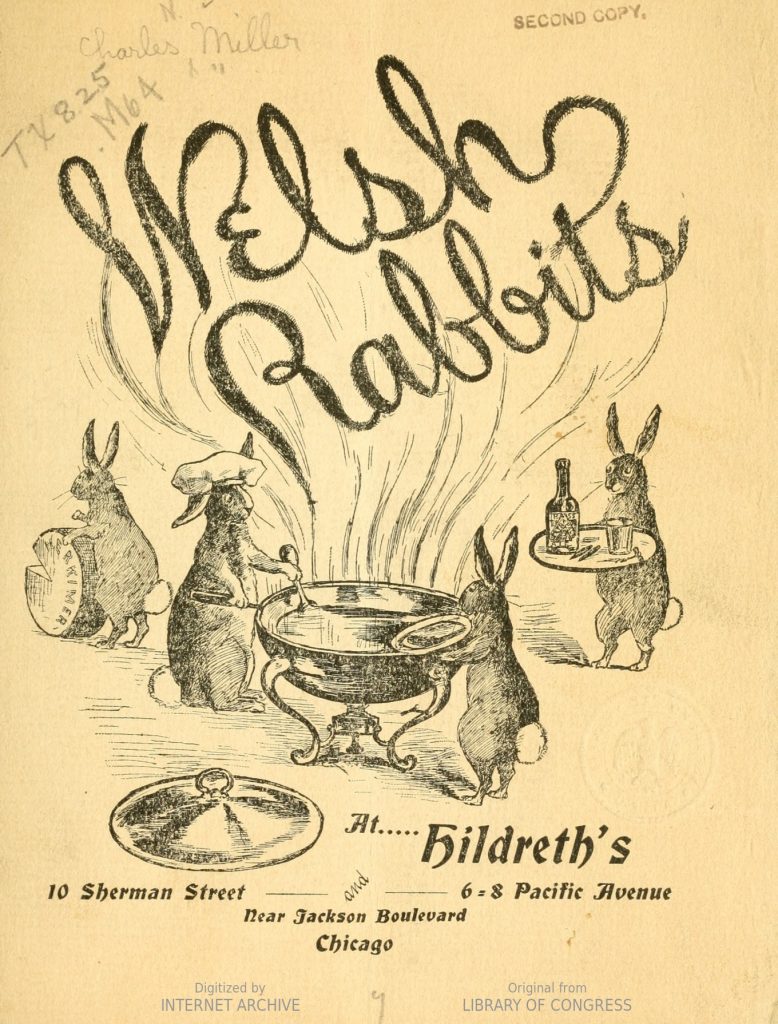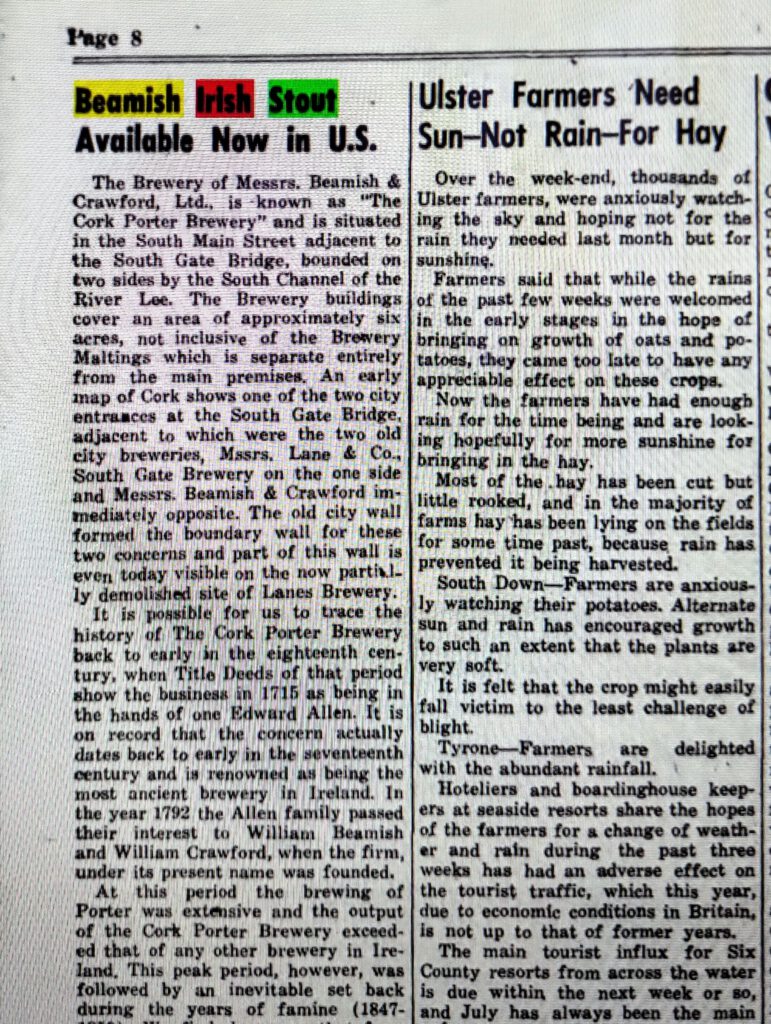Mega Merger Births Champlain Brewery
Earlier, I discussed the 1909 merger of breweries in Quebec Province. All then operating joined to form the resultant, Montreal-based National Breweries Ltd. (NBL) except for famed Molson Brewery of Montreal, and the small Silver Springs Brewery in Sherbrooke, Eastern Townships, Quebec.
Proteau & Carignan, a small Quebec City brewery, was part of the merger. In 1911 a former employee of the firm, Alfred-Pierre Robitaille, decided to establish his own brewery. Further details are set out in a webpage of the Quebec Historical Society. It appears he was an accountant, not a brewer, who saw an opportunity in commercial brewing.
His Champlain Brewery was named for the founder of Quebec, Samuel de Champlain. It remained independent until 1948, when NBL acquired its shares.
A larger Social Context
37 years of business independence seems pretty good, comparable to a modern craft brewery bought out after a generation. But in Quebec such events can be significant beyond a purely commercial context.
It relates to language and culture. Brewing in the Province had been anglophone-dominated since the British Conquest of Quebec in the late 1700s. Spirited French-Canadian firms did make attempts to crack the market, of which Proteau & Carignan was an example, founded in 1891 in Quebec City.
The Frontenac Brewery, established in 1912 in Montreal, was a second example. Champlain Brewery, a third. Yet a fourth, Imperial Breweries Ltd, was set up as a francophone-managed cooperative in 1907, in Montreal again.
All ended being absorbed by NBL. NBL’s senior executives were mainly Quebec anglophones, men who formerly had managed the separate Dawes, Dow, Ekers, and Boswell breweries, which formed the main components of the 1909 merger.
NBL’s in-house magazine of the 1940s was, however, bilingual. And two languages were used on the shop floor and by the all-crucial sales force. But NBL was not owned, or for the most part managed, by French-speakers.
Yet, francophones formed, and still do, about 80% of Quebec’s population. Through to the mid-1900s French-speaking business in many sectors could not get a foothold, a historical legacy connected to the British takeover, although not completely. Other factors, germane to the nature of French-Canadian society, also played a role, especially the all-important Catholicity of French Quebec, then.
Frontenac Brewery was taken over by NBL in 1925, 13 years after starting business. Imperial Breweries was bought out by NBL after only two years of operation.
A full explanation of why francophone beer firms could not keep pace is beyond my scope here. It would make an interesting study in a branch of the social sciences or economics, certainly. Francophone firms had the advantage of appealing to national and patriotic sentiment, in a mostly French-speaking province. Imperial Breweries tried this tack, as I discussed earlier, to little manifest effect.
By my study, Frontenac Brewery was more nuanced in this regard, possibly not wanting to offend Montreal’s large English-speaking beer market.
Still, the sub-text could not be ignored: its francophones in charge made a product popular among the general population, and francophone beer drinkers should have embraced its beers by that fact alone.
Yet, not enough did, not at any rate to keep the business independent past a dozen years.
La Madelon Beer and a Famous Song
Champlain Brewery also tried an appeal to nationalist feeling. In 1935 it launched a new brand, La Madelon, a French name clearly themed, as will appear, to la francophonie.
Madelon beer was an ale, hence British-oriented in palate, not a “continental” lager such as Frontenac Brewery made. The charming Madelon label stated “ale” next to “bière”, per this source: Thomas Fisher Rare Book Collection on Flickr:

At the time ale had the great bulk of beer sales in Quebec irrespective of the consumer’s mother tongue, so making Madelon an ale was a prudent move. The brand thus formed a hybrid, a British-descended taste with a French name and cultural associations.
In 1936 Champlain, listing Madelon among its range, made a frank appeal for French-Canadian support, via an ad in newspaper Le Soleil (June 30, 1936, via Quebec Government Archives):

In English:
“French-Canadians: If we helped each other in all aspects of life, so much stronger would we be!”.
Madelon was named for a patriotic French song of World War I also known as “Quand Madelon”. The stirring tune remained in popular memory, overseas as well, and even proved a rallying point in the next (Second) World War.
The song was popular in Britain too, with many recordings made in English. A recent performance of the song is affecting, linked in an informative blogpost at The University of Melbourne.
Whether heard in French or English, Madelon of the tune was a young waitress Allied soldiers encountered at her father’s tavern in French Flanders. She reminded them of home, of the values they were fighting for.
An Emotive Brand
Champlain’s choice of the Madelon name and image was strategic. The allusion was French-cultural but appealed to English-speakers since Britain, Canada and the U.S. all participated with France in winning the last war. (Hence, too, the Union Jack in some labels should not have put off nationalist-oriented Quebeckers, as it otherwise might have).
Further, the Madelon figure probably elicited among some nostalgia for a pastoral, traditional Quebec now quickly yielding to the forces of urbanisation and consumerism.
In sum, the right notes were struck, yet the brand by available evidence had a short life.
The Mid-1930s Beer Range
The beers listed in the 1936 ad are, first, the Special. It was an India Pale Ale. This is made clear in later NBL company reports, as I discussed here.
A label at Thomas Fischer is further confirmation that Special was an India Pale Ale. The third beer, Champlain XXX, likely was a medium-gravity porter. The “Real Stout”, described as a “Porter anglais“, was probably a stronger porter, or stout if you will.
The Madelon was perhaps a lower gravity filtered Special. In the early 1920s Champlain marketed two I.P.A.s, one subtitled Export as a press ad shows:

The Export Ale was probably filtered and “sparkling”, like the better-known Molson Export Ale introduced about 1903. Likely the Special was stronger, more hopped, and perhaps bottle-conditioned – old school, as viewed then.
La Madelon of the next decade may have been the 1920s Champlain Export Ale, renamed and relaunched.
Endgame for Champlain and Similar Breweries
NBL scooped up the francophone-owned Champlain Brewery in 1948, but in 1952 NBL itself was gobbled up, by Toronto-based Canadian Breweries Ltd., controlled by the industrialist and financier E. P. Taylor.
Business, in the end, is impersonal in its objects – it has an internal logic irrespective of nationalist and other considerations, at least when a free market is in place.
True, Quebec francophone breweries had an advantage of cultural identification with the majority population. But whatever business flowed from that wasn’t enough, and/or other factors were at play, which made the breweries susceptible to takeover by – at the time – a big “English” brewery, viz. NBL. This type of situation caused distress in parts of Quebec society, giving rise to the Quiet Revolution, as it was termed, of the late 1950s and 1960s and later enactment of French language laws among much else.
Canadian Breweries Ltd. and Anti-Trust
The buy-out of Champlain Brewery probably contributed to an anti-trust investigation of Canadian Breweries Ltd., which had subsequently bought out NBL.
A March 1951 story in Le Soleil stated a union delegate requested the support of his Trades Federation to ask the Federal government to investigate a potential monopoly in brewing.
I do not rule out that cultural factors were at play here, beyond the usual commercial and economic issues raised by such acquisitions. The Champlain case, then the buy-out of NBL, were similar in economic impact to countless other mergers in the Canadian and international brewing business: rationalization of plants, trimming of personnel, and reduction of brands.* But in the Quebec context this weakened the French-Canadian economic base, by removing a player owned and managed by francophones.
Conspiracy charges were eventually laid against Canadian Breweries Ltd., for violating the Canadian Combines Investigation Act. The company was acquitted however, mainly because it was found a normal competitive market did not exist in the Canadian brewing industry, due to its significant regulation by the provinces in which they did business.**
Note re images: the source of each above is linked in the text. All intellectual property therein belongs solely to the lawful owner, as applicable. Used for educational and research purposes. All feedback welcomed.
…
*Canadian Breweries closed the Champlain plant in 1956, according to the Quebec Historical Society account linked above in the past.
*Text of this post was lightly edited for concision and clarity, February 25, 26, 2024.















